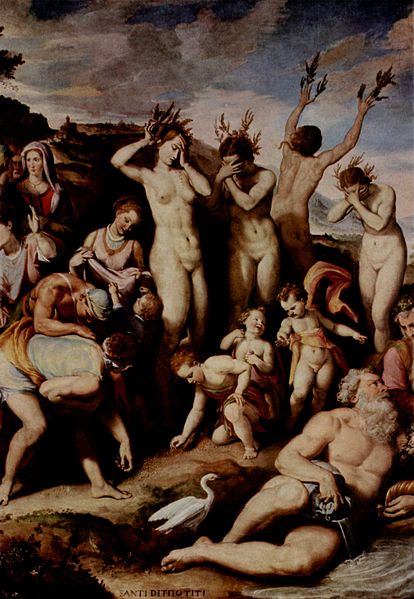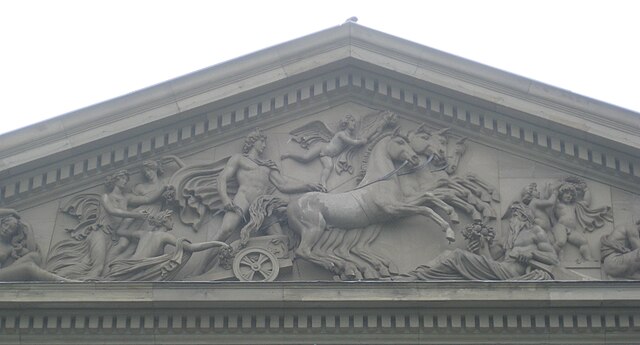Clymene (mother of Phaethon)
In Greek mythology, Clymene or Klymene was the name of an Oceanid nymph loved by the sun god Helios and the mother by him of Phaethon and the Heliades. In most versions, Clymene is the one to reveal to Phaethon his divine parentage and encourage him to seek out his father, and even drive his solar chariot.
A woman, perhaps Clymene, leaning against Helios (far right) in a Phaethon sarcophagus
Clymene urging Phaethon, 1589 engraving.
The Sisters of Phaethon are Transformed into Poplars by Santi di Tito, 16th century.
In ancient Greek religion and mythology, Helios is the god who personifies the Sun. His name is also Latinized as Helius, and he is often given the epithets Hyperion and Phaethon. Helios is often depicted in art with a radiant crown and driving a horse-drawn chariot through the sky. He was a guardian of oaths and also the god of sight. Though Helios was a relatively minor deity in Classical Greece, his worship grew more prominent in late antiquity thanks to his identification with several major solar divinities of the Roman period, particularly Apollo and Sol. The Roman Emperor Julian made Helios the central divinity of his short-lived revival of traditional Roman religious practices in the 4th century AD.
Helios in his chariot, early 4th century BC, Athena's temple, Ilion
Helios (far right) in a Phaethon sarcophagus, detail, marble, third century AD, Verona, Italy.
Helios relief (1830), Stuttgart, Rosenstein Castle.
Bust of the sun-god Helios, second century AD; the holes were used for the attachment of a sun ray crown, Ancient Agora Museum, Athens, Greece.






